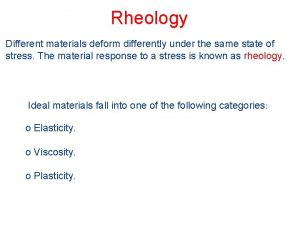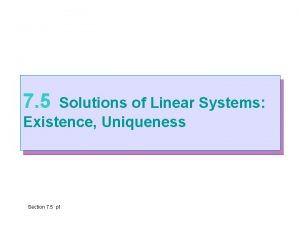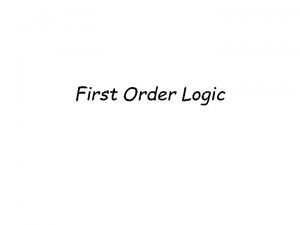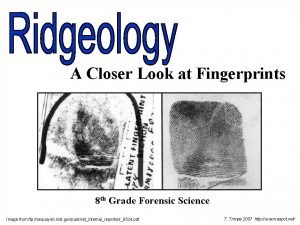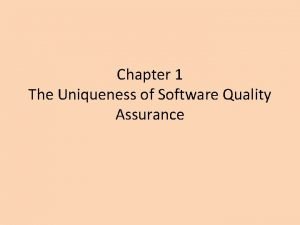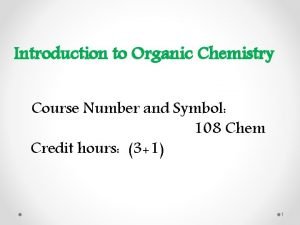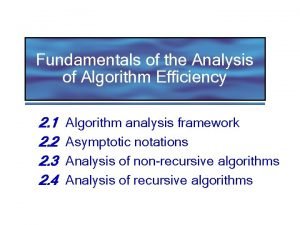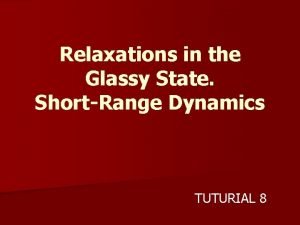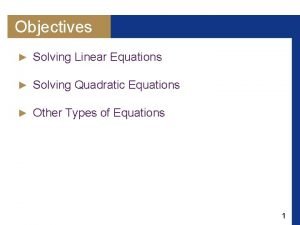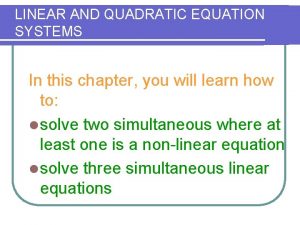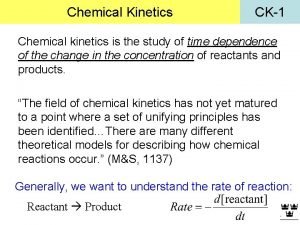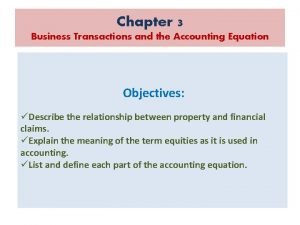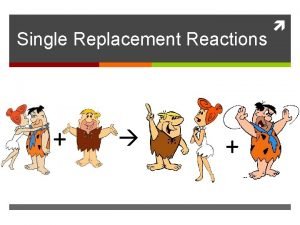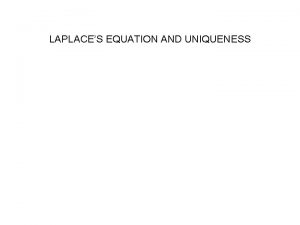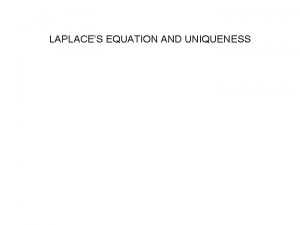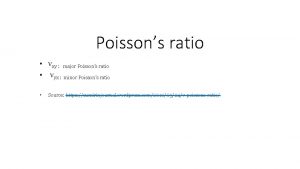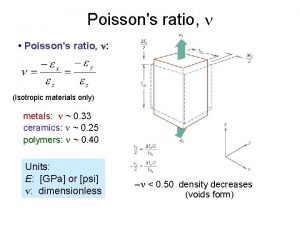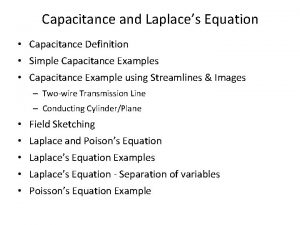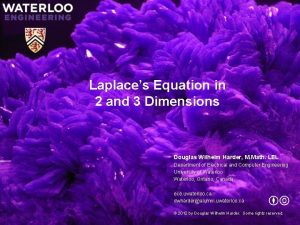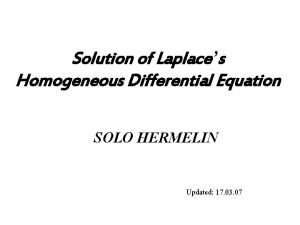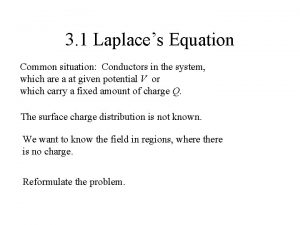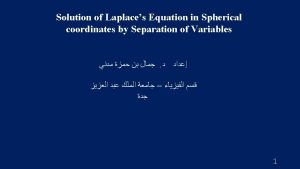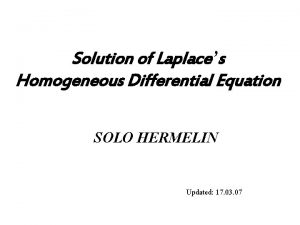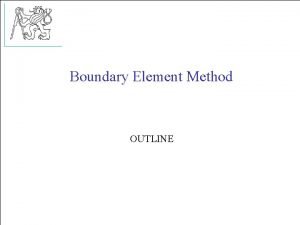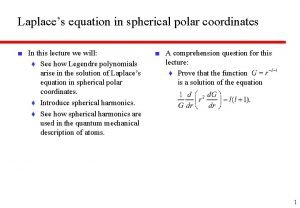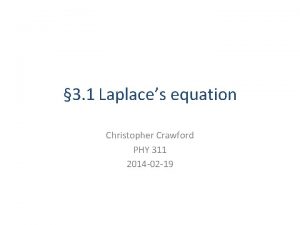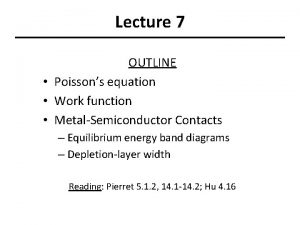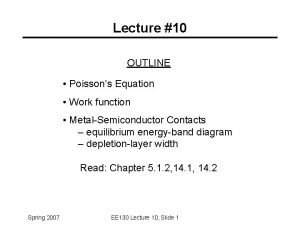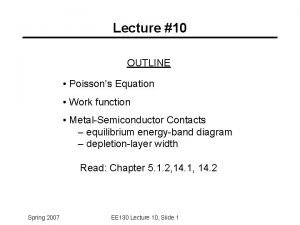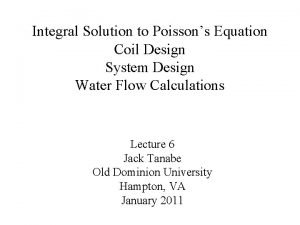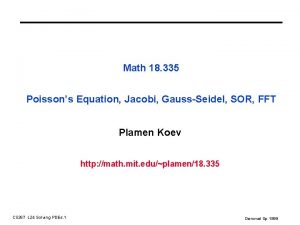CHAPTER 6 LAPLACES EQUATION POISSONS EQUATION AND UNIQUENESS






















- Slides: 22

CHAPTER 6 LAPLACE’S EQUATION, POISSON’S EQUATION AND UNIQUENESS THEOREM 6. 1 LAPLACE’S AND POISSON’S EQUATIONS 6. 2 UNIQUENESS THEOREM 6. 3 SOLUTION OF LAPLACE’S EQUATION IN ONE VARIABLE 6. 4 SOLUTION FOR POISSON’S EQUATION 1

6. 0 LAPLACE’S AND POISSON’S EQUATIONS AND UNIQUENESS THEOREM - In realistic electrostatic problems, one seldom knows the charge distribution – thus all the solution methods introduced up to this point have a limited use. - These solution methods will not require the knowledge of the distribution of charge.

6. 1 LAPLACE’S AND POISSON’S EQUATIONS To derive Laplace’s and Poisson’s equations , we start with Gauss’s law in point form : (1) Use gradient concept : (2) (3) Operator : Hence : (4) (5) => Poisson’s equation is called Poisson’s equation applies to a homogeneous media.

When the free charge density (6) In rectangular coordinate : => Laplace’s equation

6. 2 UNIQUENESS THEOREM Uniqueness theorem states that for a V solution of a particular electrostatic problem to be unique, it must satisfy two criterion : (i) Laplace’s equation (ii) Potential on the boundaries Example : In a problem containing two infinite and parallel conductors, one conductor in z = 0 plane at V = 0 Volt and the other in the z = d plane at V = V 0 Volt, we will see later that the V field solution between the conductors is V = V 0 z / d Volt. This solution will satisfy Laplace’s equation and the known boundary potentials at z = 0 and z = d. Now, the V field solution V = V 0(z + 1) / d will satisfy Laplace’s equation but will not give the known boundary potentials and thus is not a solution of our particular electrostatic problem. Thus, V = V 0 z / d Volt is the only solution (UNIQUE SOLUTION) of our particular problem.

6. 3 SOLUTION OF LAPLACE’S EQUATION IN ONE VARIABLE Ex. 6. 1: Two infinite and parallel conducting planes are separated d meter, with one of the conductor in the z = 0 plane at V = 0 Volt and the other in the z = d plane at V = V 0 Volt. Assume and between the conductors. Find : (a) V in the range 0 < z < d ; (b) between the conductors ; (c) between the conductors ; (d) Dn on the conductors ; (e) the conductors ; (f) capacitance per square meter. Solution : (a) Since and the problem is in rectangular form, thus (1) on

We note that V will be a function of z only V = V(z) ; thus : (2) (3) Integrating twice : (4) (5) where A and B are constants and must be evaluated using given potential values at the boundaries : (6) (7)

Substitute (6) and (7) into general equation (5) : (b) (c)

(e) Capacitance : (d) Surface charge : z=d V = V 0 V z=0 V=0 V

Ex. 6. 2: Two infinite length, concentric and conducting cylinders of radii a and b are located on the z axis. If the region between cylinders are charged free and , V = V 0 (V) at a, V = 0 (V) at b and b > a. Find the capacitance per meter length. Solution : Use Laplace’s equation in cylindrical coordinate : and V = f(r) only :

and V = f(r) only : (1)

Boundary condition : (1) Solving for A and B : Substitute A and B in (1) : ;

Surface charge densities: Line charge densities :

Capacitance per unit length:

Ex. 6. 3: Two infinite conductors form a wedge located at is as shown in the figure below. If this region is characterized by charged free. Find. Assume V = 0 V at and at . z = /6 x = 0 V = 100 V

Solution : V = f ( ) in cylindrical coordinate : Boundary condition : Hence : for region :

Ex. 6. 4: Two infinite concentric conducting cone located at. The potential V = 0 V at and V = 50 V at conductors. . Find V and between the two Solution : V = f ( ) in spherical coordinate : z = /10 = /6 V = 50 V y x Using :

Boundary condition : Solving for A and B : Hence at region : and

6. 4 SOLUTION FOR POISSON’S EQUATION When the free charge density Ex. 6. 5: Two infinite and parallel conducting planes are separated d meter, with one of the conductor in the x = 0 plane at V = 0 Volt and the other in the x = d plane at V = V 0 Volt. Assume and between the conductors. Find : (a) V in the range 0 < x < d ; (b) Solution : V = f(x) : between the conductors

Boundary condition : In region : ;

Ex. 6. 6: Repeat Ex. 6. 5 with Solution :

Boundary condition : In region :
 Poissons equation
Poissons equation Poissons spot
Poissons spot Pélagique
Pélagique Poissons
Poissons Lesson 3 existence and uniqueness
Lesson 3 existence and uniqueness Existence and uniqueness theorem
Existence and uniqueness theorem 3 principles of fingerprinting
3 principles of fingerprinting Polychoric correlation stata
Polychoric correlation stata Uniqueness of the bible
Uniqueness of the bible Logical operators in r
Logical operators in r The study of the uniqueness of friction ridge structures
The study of the uniqueness of friction ridge structures The uniqueness of jesus christ
The uniqueness of jesus christ Uniqueness of software quality assurance
Uniqueness of software quality assurance Uniqueness of carbon
Uniqueness of carbon Basic efficiency classes
Basic efficiency classes Uniqueness of carbon
Uniqueness of carbon Eyring equation and arrhenius equation
Eyring equation and arrhenius equation Linear equation and quadratic equation
Linear equation and quadratic equation System of linear and quadratic equations
System of linear and quadratic equations Eyring equation
Eyring equation Eyring equation and arrhenius equation
Eyring equation and arrhenius equation Business transactions and the accounting equation chapter 3
Business transactions and the accounting equation chapter 3 Single displacement general equation
Single displacement general equation



